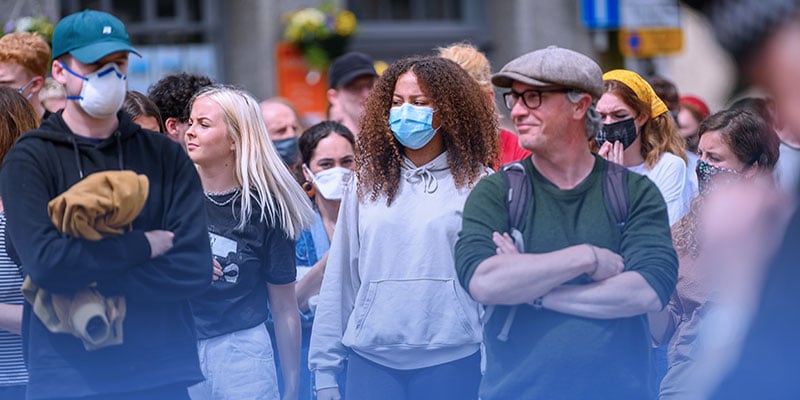 There have been long debates regarding the use of masks. The reality is that in some states — and in some cities it is now a requirement. Employees have been assaulted for enforcing their store policies. Because dealing with agitated customers is turning particularly dangerous for essential workers, managers are training staff on how to handle these type of situations. How can employees do their job without getting into complicated altercations?
There have been long debates regarding the use of masks. The reality is that in some states — and in some cities it is now a requirement. Employees have been assaulted for enforcing their store policies. Because dealing with agitated customers is turning particularly dangerous for essential workers, managers are training staff on how to handle these type of situations. How can employees do their job without getting into complicated altercations?
Video analytics can help with that! These advanced electronic security technologies can help to recognize social-distancing violations, ensure that employees and guests are wearing face masks, count people to monitor occupancy, and detect inconvenient crowding.
Face mask detection is a developing technique and video analytics tool for video management platforms that generates an alarm when detecting the absence of a mask. It uses artificial intelligence to identify people walking through a security camera, recognizes face mask usage, and collects statistics if needed. If the face mask detector application does not identify a mask, an alert is sent with a picture of the person. The most convenient side to this solution is that existing cameras can be easily enabled with this analytic feature.
Another requirement for most retailers and property managers is to establish and maintain a specific occupancy level. Enforcing occupancy is another rule to physical distancing measures. An occupancy estimator solution can calculate the number of people within an establishment and notify employees when limits are being reached. Using analytics allows to manage occupancy levels with real-time data. Security can be warned when people walk into restricted areas or when they are congregating in common spaces. These real-time alerts make it possible to encourage safe distances while complying with CDC guidelines. Other analytics applications that could be useful for this purpose are people counting and intrusion detection.
In addition, another solution that is related to occupancy levels focuses specifically on social distancing. The combination of audio capabilities with network cameras integrated to queue monitoring analytics and a network speaker, provides managers with accurate information about where congestion occurs and once it is identified, a pre-defined audio clip can be played to advise customers to maintain social distance.
Many industries have been impacted by these new regulations and should consider technology to help them accommodate to CDC health and safety guidelines. Despite not being proven to reduce the spread of COVID-19, these solutions can assist organizations in minimizing problematic situations. Instead of being exposed to continuous disturbances, employees could be brought back to their day-to-day activities and be removed from potential aggression by digitizing these offline processes.
Nicole Trujillo
Nicole Trujillo is the Marketing Coordinator at Security 101, bringing creativity and energy to every project she touches. From crafting compelling content to supporting events and digital campaigns, she helps keep our brand messaging strong and ...
